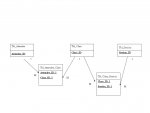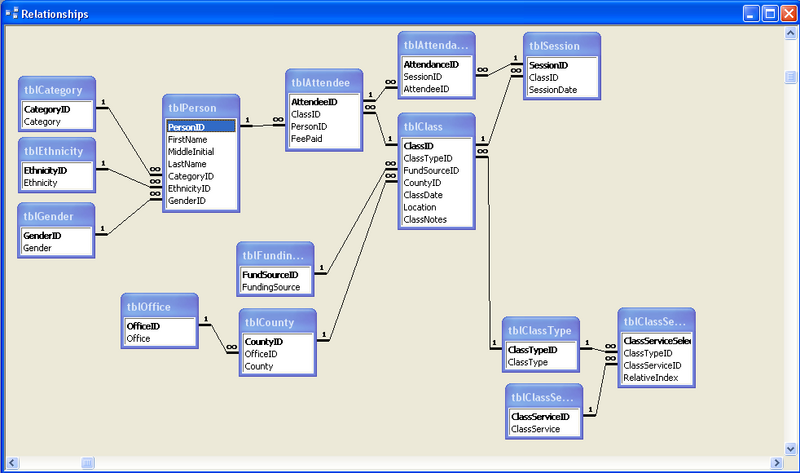After long, long, long hiatus of doing other stuff, I wanted to get around to update the database. One thing I had set up wrong was the attendance rosters.
I just need to be able to create a new class, which may have more than one sessions, then make a list of registrants for a particular class, then be able to track their attendance per session for this class.
However, my Google-Fu is lacking as every templates I've looked at doesn't really answer my question, which how three entities relate to each other.
I know for sure that Class-Attendees is a one many relationship. Same attendee can register for more than one class, so that's no brainer. Likewise, Class-Session should be also be one many relationship for obvious reasons. However, if I relate Session to Attendee, it would create a circular relationship between the three entities.
I've toyed with the idea of having a hierarchial tables of Class -> Attendees -> Sessions, but that does not relate the sessions to the class, which is necessary.
I wonder if I should create a fourth table to contain attendances and use Session and Attendees as FK, but that still wouldn't fix the possiblity of a circular relationship?
Any insights will be greatly appreciated. TIA
I just need to be able to create a new class, which may have more than one sessions, then make a list of registrants for a particular class, then be able to track their attendance per session for this class.
However, my Google-Fu is lacking as every templates I've looked at doesn't really answer my question, which how three entities relate to each other.
I know for sure that Class-Attendees is a one many relationship. Same attendee can register for more than one class, so that's no brainer. Likewise, Class-Session should be also be one many relationship for obvious reasons. However, if I relate Session to Attendee, it would create a circular relationship between the three entities.
I've toyed with the idea of having a hierarchial tables of Class -> Attendees -> Sessions, but that does not relate the sessions to the class, which is necessary.
I wonder if I should create a fourth table to contain attendances and use Session and Attendees as FK, but that still wouldn't fix the possiblity of a circular relationship?
Any insights will be greatly appreciated. TIA


